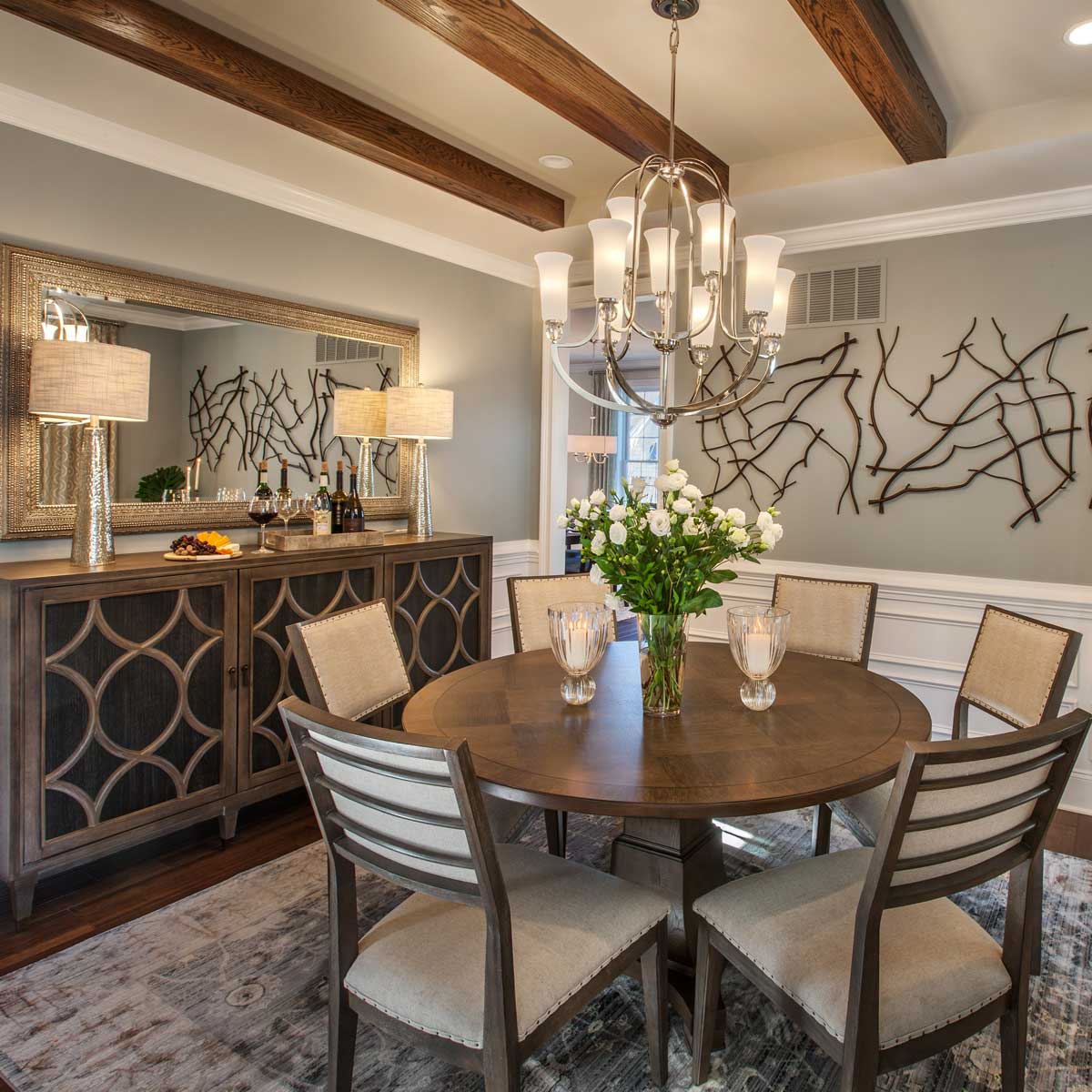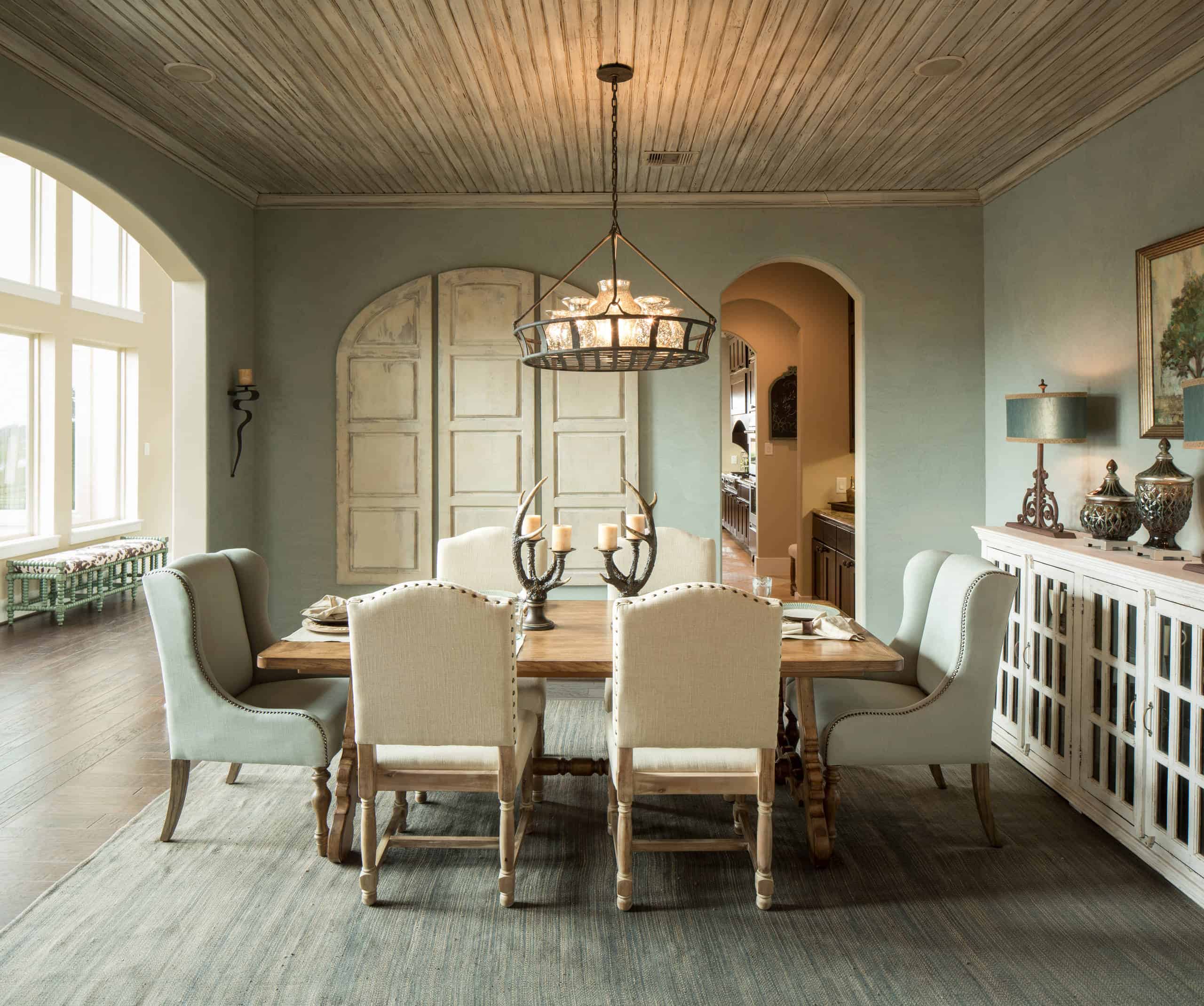Popular Dining Room Design Trends

Dining room design – The dining room is a space for gathering, entertaining, and enjoying meals with loved ones. As such, it’s important to create a space that is both stylish and functional.
Here are some of the latest dining room design trends:
Color Schemes
Neutral colors, such as white, beige, and gray, are always popular for dining rooms. These colors create a clean and sophisticated look that can be easily accessorized with different colors and patterns.
To enhance the allure of your dining room, consider coordinating its design with the adjacent hallway decor. By mirroring color palettes or incorporating complementary textures, you can create a cohesive flow throughout your home. For hallway decor inspiration, explore our curated collection here.
This harmonious transition between rooms will elevate the overall ambiance and create a welcoming and stylish abode.
Bold colors, such as navy blue, green, and yellow, are also becoming increasingly popular for dining rooms. These colors can add a touch of personality and drama to the space.
When planning your dining room design, consider incorporating an anthropologie tapestry as a captivating focal point. These intricate woven artworks not only add a touch of bohemian flair but also create a warm and inviting ambiance, setting the stage for memorable dining experiences.
| Image | Description |
|---|---|
 |
This dining room features a neutral color scheme with white walls and beige furniture. The space is accessorized with pops of color from the artwork and throw pillows. |
 |
This dining room features a bold color scheme with navy blue walls and green furniture. The space is accessorized with pops of yellow from the artwork and flowers. |
Furniture Styles
Traditional furniture styles, such as Chippendale, Queen Anne, and Victorian, are always popular for dining rooms. These styles feature elegant lines and intricate carvings.
Modern furniture styles, such as mid-century modern and contemporary, are also becoming increasingly popular for dining rooms. These styles feature clean lines and simple silhouettes.
| Image | Description |
|---|---|
 |
This dining room features a traditional furniture style with a Chippendale table and chairs. The space is accessorized with a chandelier and antique mirror. |
 |
This dining room features a modern furniture style with a mid-century modern table and chairs. The space is accessorized with a pendant light and abstract artwork. |
Lighting Fixtures
Chandeliers are a classic choice for dining rooms. They add a touch of elegance and drama to the space.
Pendant lights are also a popular choice for dining rooms. They provide task lighting for the table and can also add a touch of style to the space.
| Image | Description |
|---|---|
 |
This dining room features a chandelier with a crystal base and brass arms. The chandelier adds a touch of elegance and drama to the space. |
 |
This dining room features pendant lights with a metal base and glass shades. The pendant lights provide task lighting for the table and add a touch of style to the space. |
Factors that Influence Dining Room Design Trends
There are a number of factors that influence dining room design trends, including:
- Cultural influences: The culture of a region can have a significant impact on the design of its dining rooms. For example, in China, dining rooms are often designed to be large and formal, while in Japan, they are often designed to be small and intimate.
- Technological advancements: Technological advancements can also influence dining room design trends. For example, the invention of the electric light bulb led to the development of more elaborate and decorative chandeliers.
- Personal preferences: Ultimately, the design of a dining room should reflect the personal preferences of the homeowner. There is no right or wrong answer when it comes to dining room design, so it’s important to choose a style that you love and that fits your lifestyle.
Dining Room Design Principles

Dining room design is an art form that requires careful consideration of scale, proportion, and balance. A well-designed dining room should be both functional and visually appealing, creating a space that is both inviting and comfortable.
Layout
- The dining room layout should be determined by the size and shape of the room, as well as the number of people who will be dining there regularly.
- A rectangular dining room can accommodate a long, rectangular table, while a square dining room may be better suited for a round or oval table.
- The table should be large enough to comfortably seat all of the diners, with at least 24 inches of space between each person.
- The chairs should be comfortable and supportive, with a seat height that is appropriate for the height of the table.
Lighting
Lighting is an important element of dining room design. The lighting should be bright enough to see the food and each other, but not so bright that it is glaring or uncomfortable. A combination of natural and artificial light is ideal.
Ventilation
Ventilation is also important in a dining room. The room should be well-ventilated to prevent odors from lingering. A ceiling fan or open windows can help to circulate the air.
Acoustics
Acoustics are often overlooked in dining room design, but they can have a significant impact on the overall experience. A dining room with hard surfaces, such as tile or hardwood floors, can be very noisy. Soft surfaces, such as carpets or rugs, can help to absorb sound and create a more intimate atmosphere.
Dining Room Furniture and Decor

Creating a harmonious and inviting dining room involves selecting the right furniture and decor. The dining table serves as the centerpiece, so choose one that complements the room’s size, shape, and style. Consider materials such as wood, glass, or metal, and finishes like polished, distressed, or painted. Upholstered chairs provide comfort and elegance, while wooden or metal chairs offer a more modern or industrial touch.
Sideboards and buffets add storage and display space. Look for pieces with ample drawers and shelves to accommodate table linens, dinnerware, and serving platters. Choose materials and finishes that match the dining table and chairs, or opt for contrasting pieces to create a dynamic look.
Accessories and Decor
Accessories and decor play a crucial role in enhancing the overall design of a dining room. Artwork, such as paintings or photographs, adds color and personality. Mirrors can create an illusion of space and reflect light, making the room feel larger and brighter. Plants bring a touch of nature indoors and can purify the air.
“Accessorize with moderation to avoid cluttering the space. A few well-chosen pieces can make a big impact.”